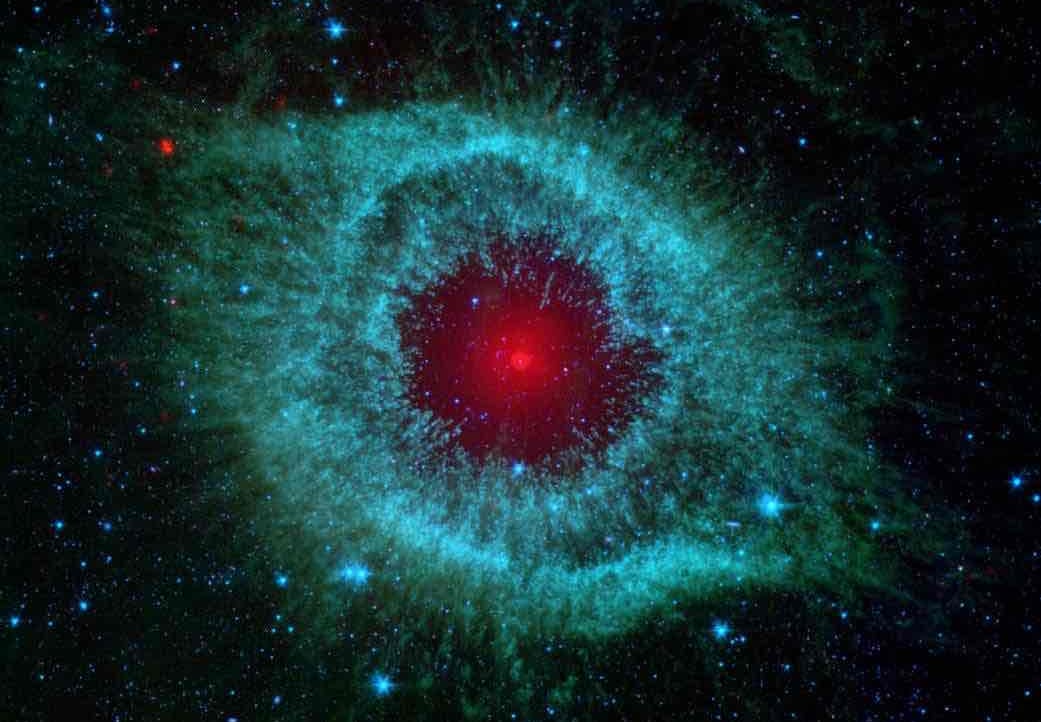
Eye of god
@eyeofgod
189 Following
69 Followers
When the hydrogen fuel for the fusion reaction runs out, the star turns to helium for a fuel source, burning it into an even heavier mix of carbon, nitrogen and oxygen. Eventually, the helium will also be exhausted, and the star dies, puffing off its outer gaseous layers and leaving behind the tiny, hot, dense core, called a white dwarf. The white dwarf is about the size of Earth, but has a mass very close to that of the original star; in fact, a teaspoon of a white dwarf would weigh as much as a few elephants!
The glow from planetary nebulae is particularly intriguing as it appears surprisingly similar across a broad swath of the spectrum, from ultraviolet to infrared. The Helix remains recognizable at any of these wavelengths, but the combination shown here highlights some subtle differences. 0 reply
8 recasts
7 reactions
0 reply
5 recasts
7 reactions
0 reply
3 recasts
5 reactions
0 reply
2 recasts
4 reactions
0 reply
0 recast
1 reaction
0 reply
0 recast
1 reaction
0 reply
0 recast
1 reaction
0 reply
0 recast
1 reaction
1 reply
0 recast
0 reaction